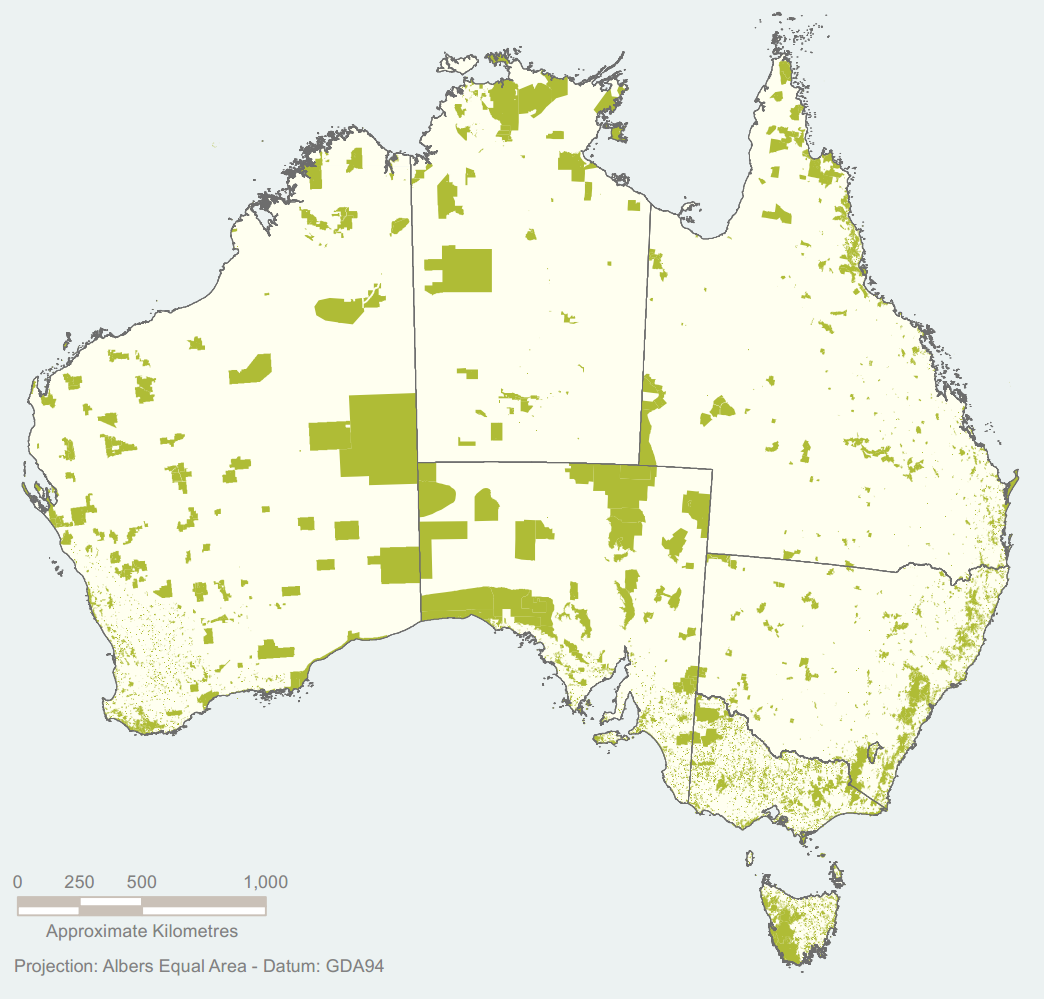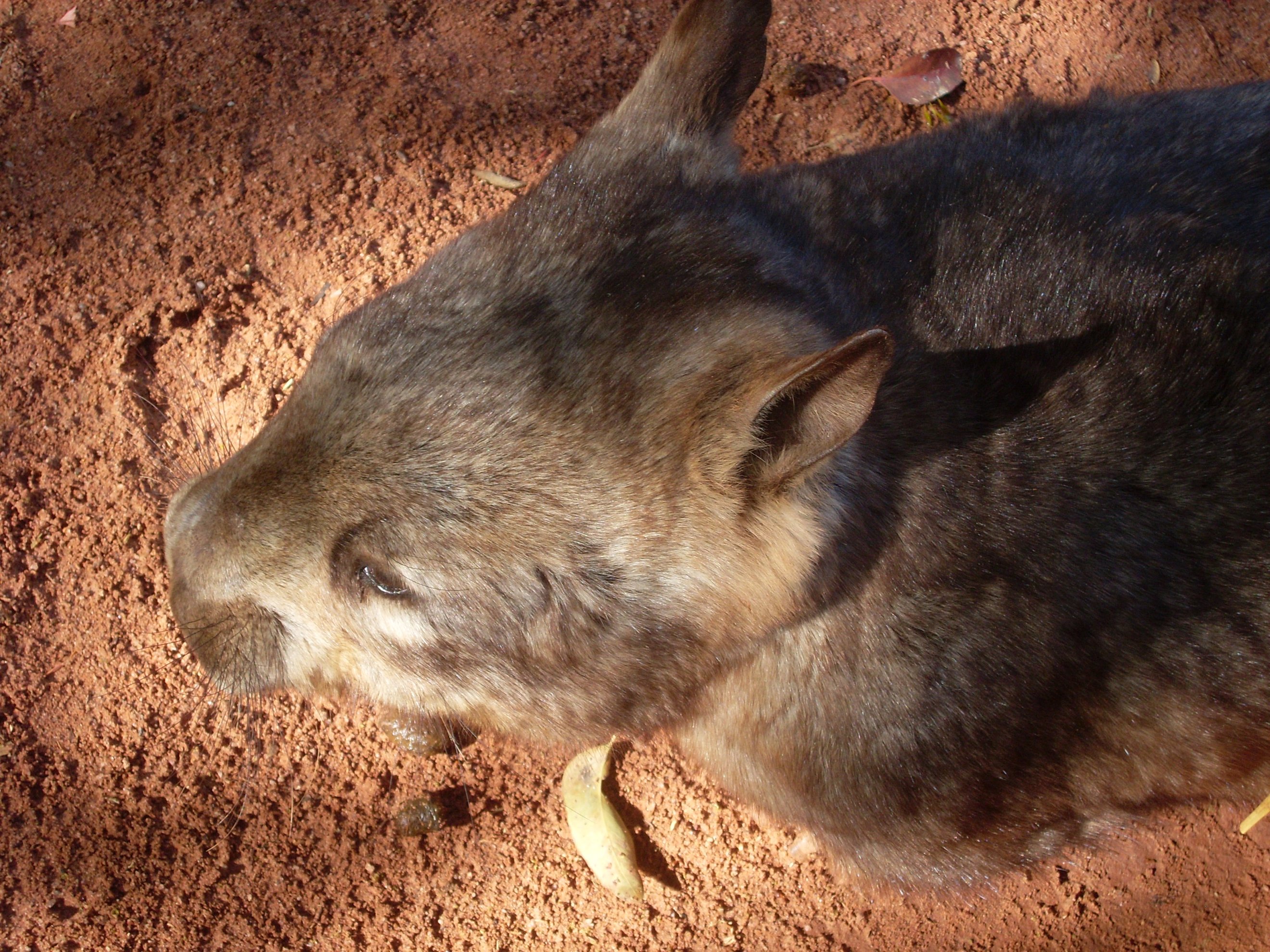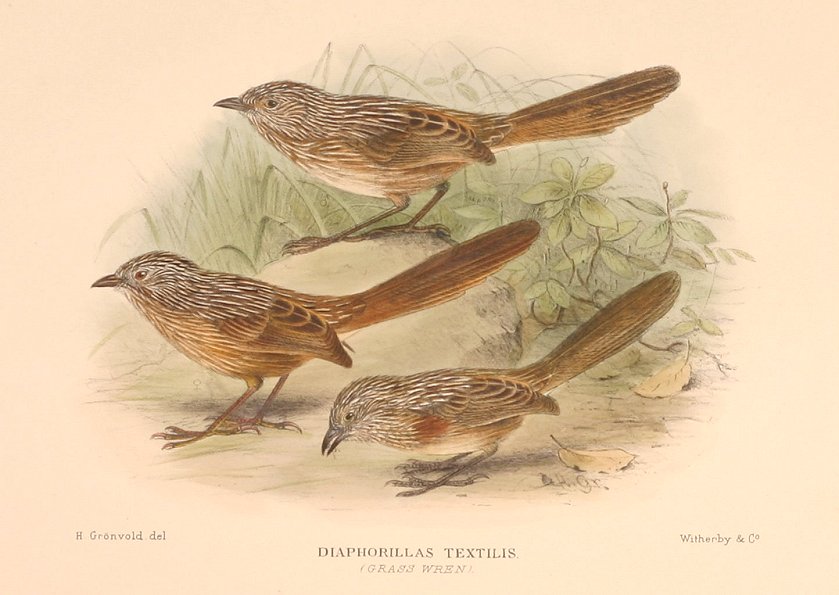|
Bon Bon Station Conservation Reserve
Bon Bon Reserve is a private protected area located in the Australian state of South Australia, west of the town of Roxby Downs in the Woomera Prohibited Area. It is owned and managed by Bush Heritage Australia (BHA). It forms an important link of protected land between Yellabinna Regional Reserve and Wabma Kadarbu Mound Springs Conservation Park. History Bon Bon Reserve was a sheep station for 150 years before being purchased by BHA in 2008 with assistance from the Australian and South Australian governments. The station ran an average of approximately 15,000 head of sheep between 1970 and 1989 with flocks exceeding 23,000 at times prior to this. The owner of Bon Bon Station, Grazier Paul Blight, sold the property to Bush Heritage Australia in 2008 for 4 million with the state and federal governments sharing in the cost. Blight had kept stock numbers low to give the vegetation a chance to regenerate and wanted the property to continue to be managed in an environmentally s ... [...More Info...] [...Related Items...] OR: [Wikipedia] [Google] [Baidu] |
Roxby Downs, South Australia
Roxby Downs is a town and locality in the Australian state of South Australia about north of the state capital of Adelaide. The town has a highly transient population of around 4,000 people. Roxby Downs has many leisure and community facilities including swimming, cinema, cultural precinct, community radio, shopping centre, schools, TAFE, cafes and sporting clubs and facilities. There are just two neighbouring towns in the area: Andamooka, an opal mining town about 30 km to the east, and Woomera, 84 km south of Roxby Downs. Andamooka people call the town home, and many are of European background since the days of early opal mining. History The town of Roxby Downs was built in 1986-88 within the traditional lands of the Kokatha. The land survey commenced in November 1986 with the aim of servicing the Olympic Dam mine and processing plant located north of the site of the town. Roxby Downs was officially opened on 5 November 1988. The opening was celebrated with a ... [...More Info...] [...Related Items...] OR: [Wikipedia] [Google] [Baidu] |
Shrubland
Shrubland, scrubland, scrub, brush, or bush is a plant community characterized by vegetation dominated by shrubs, often also including grasses, herbs, and geophytes. Shrubland may either occur naturally or be the result of human activity. It may be the mature vegetation type in a particular region and remain stable over time, or a transitional community that occurs temporarily as the result of a disturbance, such as fire. A stable state may be maintained by regular natural disturbance such as fire or browsing. Shrubland may be unsuitable for human habitation because of the danger of fire. The term was coined in 1903. Shrubland species generally show a wide range of adaptations to fire, such as heavy seed production, lignotubers, and fire-induced germination. Botanical structural form In botany and ecology a shrub is defined as a much-branched woody plant less than 8 m high and usually with many stems. Tall shrubs are mostly 2–8 m high, small shrubs 1–2 m high and su ... [...More Info...] [...Related Items...] OR: [Wikipedia] [Google] [Baidu] |
National Reserve System
Australia's National Reserve System (NRS) is a network of more than 10,000 Commonwealth plus state and territory protected areas which, in combination, on a national scale, protect more than , greater than 17% of the continent, of unique biodiversity and most significant ecological landscapes for future generations.Australian Government Department of Environment, Water, Heritage and the Arts "Caring for Our Country: National Reserve System" webpage Accessed 2 June 2010 The aim of the NRS is protect the diversity of all native landscapes, |
Protected Area
Protected areas or conservation areas are locations which receive protection because of their recognized natural, ecological or cultural values. There are several kinds of protected areas, which vary by level of protection depending on the enabling laws of each country or the regulations of the international organizations involved. Generally speaking though, protected areas are understood to be those in which human presence or at least the exploitation of natural resources (e.g. firewood, non-timber forest products, water, ...) is limited. The term "protected area" also includes marine protected areas, the boundaries of which will include some area of ocean, and transboundary protected areas that overlap multiple countries which remove the borders inside the area for conservation and economic purposes. There are over 161,000 protected areas in the world (as of October 2010) with more added daily, representing between 10 and 15 percent of the world's land surface area. As of 20 ... [...More Info...] [...Related Items...] OR: [Wikipedia] [Google] [Baidu] |
Southern Hairy-nosed Wombat
The southern hairy-nosed wombat (''Lasiorhinus latifrons'') is one of three extant species of wombats. It is found in scattered areas of semiarid scrub and mallee from the eastern Nullarbor Plain to the New South Wales border area. It is the smallest of all three wombat species. The young often do not survive dry seasons. It is the state animal of South Australia. Among the oldest southern hairy-nosed wombats ever documented were a male and a female from Brookfield Zoo just outside Chicago. Their names were Carver, who lived to be 34, and his mother, Vicky, who lived to be 24. In South Australia in 2010, a domesticated wombat named Wally was also reported as having reached the age of 34. Hamlet, a wombat at the Toronto Zoo, similarly died at age 34. Taxonomy English naturalist Richard Owen described the species in 1845. There are three synonyms: * ''Phascolomys lasiorhinus'' Gould, 1863 * ''Lasiorhinus mcoyi'' Gray, 1863 * ''Phascolomys latifrons'' Owen, 1845 Description Th ... [...More Info...] [...Related Items...] OR: [Wikipedia] [Google] [Baidu] |
Thick-billed Grasswren
The thick-billed grasswren (''Amytornis modestus'') is a species of bird in the family Maluridae. It is endemic to Australia. Its natural habitat is Mediterranean-type shrubby vegetation. Taxonomy and systematics The thick-billed grasswren was formerly considered as conspecific with the western grasswren until split as a separate species in 2010. Subspecies Seven subspecies have been identified in recent studies (Black 2011, 2016; Austin et al. 2013): * †''A. m. modestus'' – (North, 1902): Now extinct. Formerly found in Northern Territory * ''A. m. indulkanna'' – ( Mathews, 1916): Found in Northern Territory and South Australia * ''A. m. raglessi'' – Black, 2011: Found in Flinders Ranges in South Australia * ''A. m. curnamona'' – Black, 2011: Found in Lake Frome Basin in South Australia * ''A. m. cowarie'' – Black, 2016: Found in Sturt Stony Desert in South Australia * ''A. m. obscurior'' – (Mathews, 1923): Found in New South Wales * †''A. m. inexpectatu ... [...More Info...] [...Related Items...] OR: [Wikipedia] [Google] [Baidu] |
Chestnut-breasted Whiteface
The chestnut-breasted whiteface (''Aphelocephala pectoralis'') is a species of bird in the family Acanthizidae The Acanthizidae—known as Australian warblers—are a family of passerine birds which includes gerygones, the thornbills ''Acanthiza'', and the scrubwrens of ''Sericornis''. The Acanthizidae family consists of small to medium passerine birds, .... It is endemic to Australia. Its natural habitat is subtropical or tropical dry shrubland. It is threatened by habitat loss. References chestnut-breasted whiteface Birds of South Australia Endemic birds of Australia chestnut-breasted whiteface Taxonomy articles created by Polbot {{Acanthizidae-stub ... [...More Info...] [...Related Items...] OR: [Wikipedia] [Google] [Baidu] |
Major Mitchell's Cockatoo
Major Mitchell's cockatoo (''Lophochroa leadbeateri''), also known as Leadbeater's cockatoo or the pink cockatoo, is a medium-sized cockatoo that inhabits arid and semi-arid inland areas of Australia, though it is seen regularly in other climates, for example, South-East Queensland's subtropical region. Taxonomy and naming Irish naturalist Nicholas Aylward Vigors described the species in 1831 as ''Plyctolophus leadbeateri''. The scientific name commemorates the London naturalist and taxidermist Benjamin Leadbeater, who had given Vigors what would become the type specimen. Edward Lear painted it in his 1832 work ''Illustrations of the Family of Psittacidae, or Parrots''. Citing Lear, William Swainson gave it the name ''Plyctolophus erythropterus''. Major Mitchell's cockatoo may be more closely related to ''Cacatua'' than is the galah, and that its lineage diverged around the time of or shortly after the acquisition of the long crest; probably the former as this crest type is no ... [...More Info...] [...Related Items...] OR: [Wikipedia] [Google] [Baidu] |
Plains-wanderer
The plains-wanderer (''Pedionomus torquatus'') is a bird, the only representative of family Pedionomidae and genus ''Pedionomus''. It is endemic to Australia. The majority of the remaining population is found in the Riverina region of New South Wales. Description The plains-wanderer is a quail-like ground bird, measuring 15–19 cm. It is such an atypical bird that it is placed in an entire family of its own, Pedionomidae. The adult male is light brown above, with fawn-white underparts with black crescents. The adult female is substantially larger than the male, and has a distinctive white-spotted black collar. They have excellent camouflage, and will first hide at any disturbance. If approached too closely, they will run rather than fly, at which they are very poor. Females lay four eggs, which the male then incubates. Taxonomy It was formerly believed to be related to the buttonquails and thus placed in the gamebird order Galliformes or with the cranes and rail ... [...More Info...] [...Related Items...] OR: [Wikipedia] [Google] [Baidu] |
Santalum Spicatum
''Santalum spicatum'', the Australian sandalwood, also Waang and other names (Noongar) and Dutjahn ( Martu), is a tree native to semi-arid areas at the edge of Southwest Australia, in the state of Western Australia. It is also found in South Australia, where it is protected and listed as a vulnerable species. It is traded as sandalwood, and its sandalwood oil has been used as an aromatic and a food source over history. ''S. spicatum'' is one of four ''Santalum'' species occurring in Australia. History ''S. spicatum'' has been used sustainably as a source of bush food and medicine for thousands of years by Aboriginal Australians, who also use it in smoking ceremonies. Soon after the arrival of Europeans in Western Australia, colonists began harvesting sandalwood trees to export overseas for incense production. This decimated sandalwood populations in the south west agricultural zone, and pushed harvesting out into the arid and semi-arid interior. Millions of trees have been ex ... [...More Info...] [...Related Items...] OR: [Wikipedia] [Google] [Baidu] |
Waterbird
A water bird, alternatively waterbird or aquatic bird, is a bird that lives on or around water. In some definitions, the term ''water bird'' is especially applied to birds in freshwater ecosystems, although others make no distinction from seabirds that inhabit marine environments. Some water birds (e.g. wading birds) are more terrestrial while others (e.g. waterfowls) are more aquatic, and their adaptations will vary depending on their environment. These adaptations include webbed feet, beaks, and legs adapted to feed in the water, and the ability to dive from the surface or the air to catch prey in water. The term ''aquatic bird'' is sometimes also used in this context. A related term that has a narrower meaning is waterfowl. Some piscivorous birds of prey, such as ospreys and sea eagles, hunt aquatic prey but do not stay in water for long and lives predominantly over dry land, and are not considered water birds. The term waterbird is also used in the context of conservation ... [...More Info...] [...Related Items...] OR: [Wikipedia] [Google] [Baidu] |
Wader
245px, A flock of Dunlins and Red knots">Red_knot.html" ;"title="Dunlins and Red knot">Dunlins and Red knots Waders or shorebirds are birds of the order Charadriiformes commonly found wikt:wade#Etymology 1, wading along shorelines and mudflats in order to foraging, forage for food crawling or burrowing in the mud and sand, usually small arthropods such as aquatic insects or crustaceans. The term "wader" is used in Europe, while "shorebird" is used in North America, where "wader" may be used instead to refer to long-legged wading birds such as storks and herons. There are about 210 species of wader, most of which live in wetland or coastal environments. Many species of Arctic and temperate regions are strongly migratory, but tropical birds are often resident, or move only in response to rainfall patterns. Some of the Arctic species, such as the little stint, are amongst the longest distance migrants, spending the non- breeding season in the southern hemisphere. Many of the s ... [...More Info...] [...Related Items...] OR: [Wikipedia] [Google] [Baidu] |






